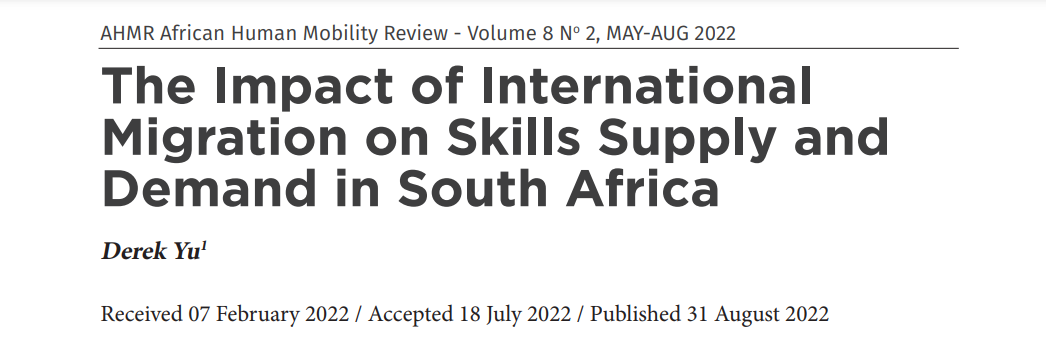
The existing South African migration literature focuses primarily on examining the well-being of immigrants to South Africa, especially their labor-market outcomes. However, none of these studies examined the well-being of South African emigrants in great detail. The objective of this study is to use the data for the period 2001–2016 sourced from the South African Census reports and Community Surveys, as well as the survey data of the top emigration destination countries to investigate the three groups: (a) immigrants to South Africa; (b) natives who remain in the country; (c) emigrants to the top destination countries (Australia, Canada, New Zealand, the United Kingdom, and the United States). The study derived empirical findings from the perspectives of skills supply and demand. The key findings showed that emigrants were most educated, enjoyed the lowest unemployment probability (10%), and were most likely to be involved in high-paying skilled occupations and tertiary-sector activities. Immigrants to South Africa experienced worse well-being than emigrants but better than natives. These immigrants were slightly more educated, and enjoyed a higher labor force participation rate (LFPR) (75%) and a lower unemployment likelihood (20%), compared with natives (55% and 30% respectively). Furthermore, for both abovementioned two groups, they were distinguished into three sub-groups – long-term, medium-term, and shortterm migrants; and long-term migrants was the sub-group that had the best labormarket outcomes. The study concludes by recommending four policy suggestions: ease up regulations to attract skilled immigrants; promote entrepreneurial activities of immigrants; better develop and retain skills of the natives; and improve migration and vacancy data capture, availability, usage and analysis


